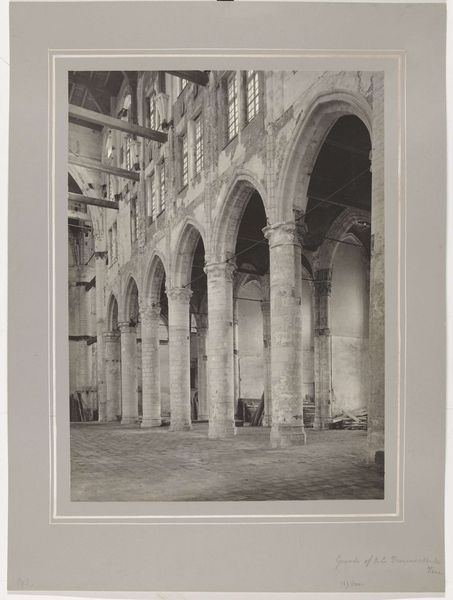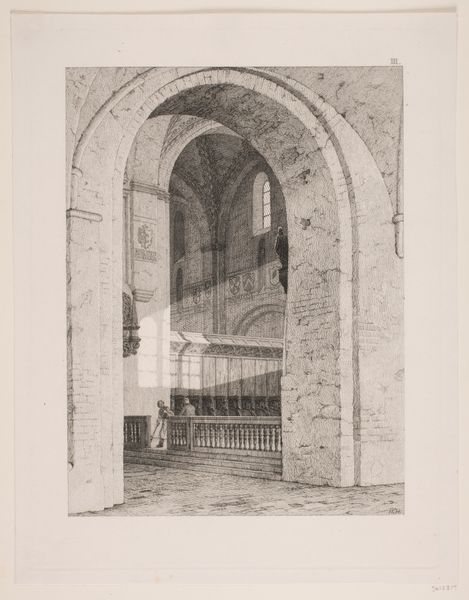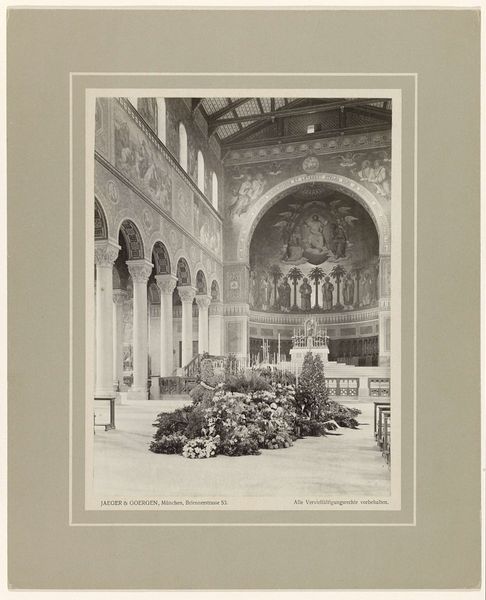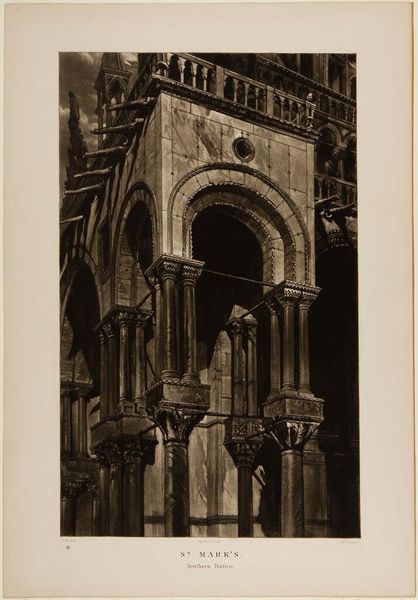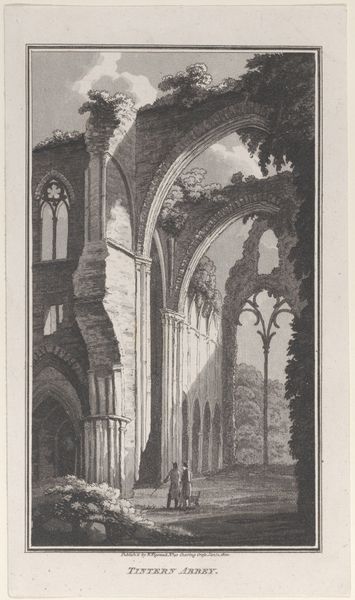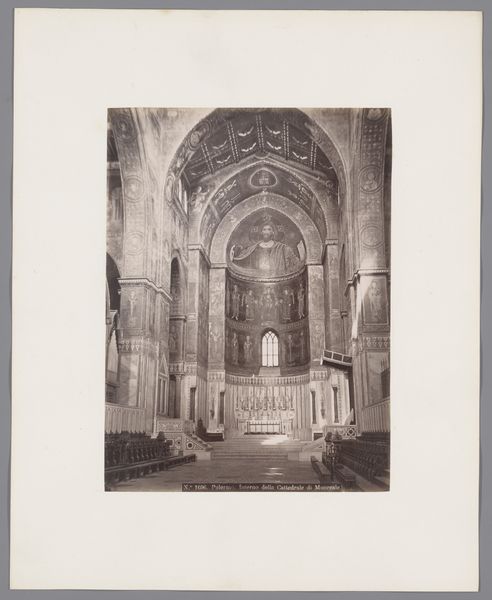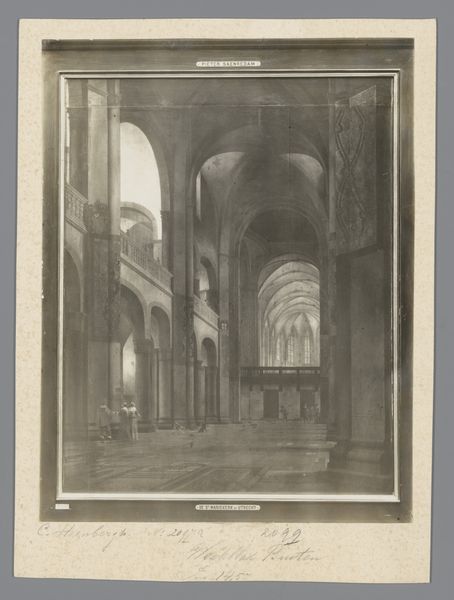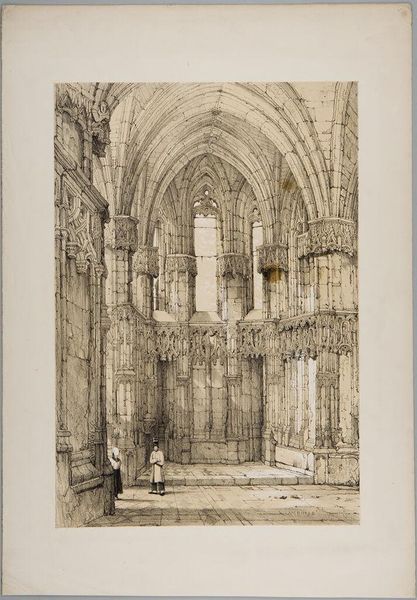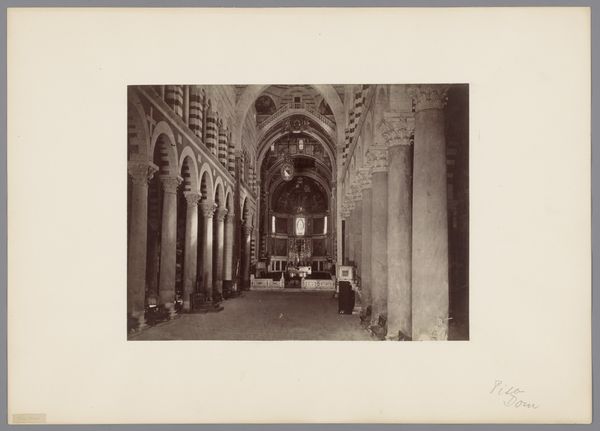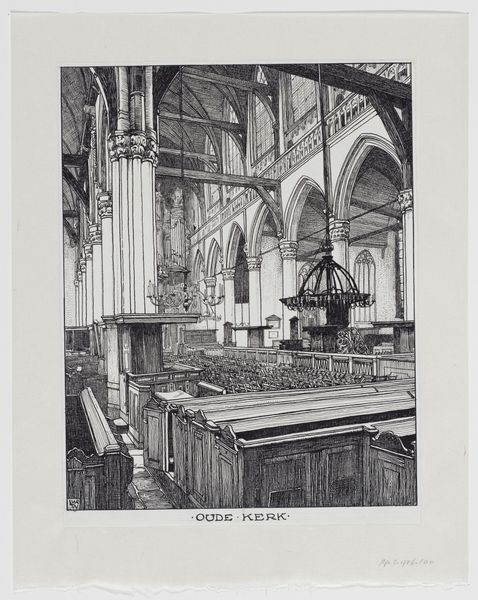
Interieur van de Grote of Onze-Lieve-Vrouwekerk te Veere 1890 - 1940
0:00
0:00
print, photography, architecture
# print
#
landscape
#
photography
#
romanesque
#
geometric
#
architecture
#
realism
Dimensions: height 388 mm, width 287 mm
Copyright: Rijks Museum: Open Domain
Curator: This haunting image is titled "Interieur van de Grote of Onze-Lieve-Vrouwekerk te Veere," an anonymous photograph, sometime between 1890 and 1940. The church's interior is rendered in stark blacks, whites, and greys. Editor: My immediate impression is one of decaying grandeur. Look at those columns, those arches. But the overall feeling is one of abandonment. You can almost smell the damp stone. Curator: That's a keen observation. Consider the physical properties of this print. The texture gives a sense of the material presence, the weight of the stone. You get a clear view of both craftsmanship and labor to construct the space, as well as the labor involved in producing this photographic print. Editor: Absolutely, and look at the social context. Churches like this weren’t just places of worship. They were centers of community, power. Seeing it like this begs the question of what forces led to its current state. Whose labor maintains it, if anyone's? Or perhaps it documents pre-restoration. Curator: Exactly. The contrast between the detailed architectural elements and the evident decay provokes an engagement with time, inviting consideration of both what it means to build and to let fall into disrepair. Editor: This image presents the Romanesque architectural form stripped bare. Think of the economics involved. Who commissioned its original construction and for what public benefit? Now, what is the public value of the current restoration efforts – or perhaps even in leaving it in this state? Curator: Yes, and from a materialist perspective, notice how the photographer frames the architecture, transforming functional and religious space into an aesthetic object intended for consumption, be it aesthetic, political, or even spiritual. Editor: Ultimately, the photograph pushes us to grapple with not only art history but with socio-political narratives, all captured within this one, still moment. I keep returning to the bareness of it all. Curator: It leaves you pondering its purpose, doesn't it? Beyond simple architectural record. It’s a conversation starter. Editor: Indeed, it's a powerful reminder that even ruins carry stories, laden with politics, social changes and the weight of history.
Comments
No comments
Be the first to comment and join the conversation on the ultimate creative platform.
